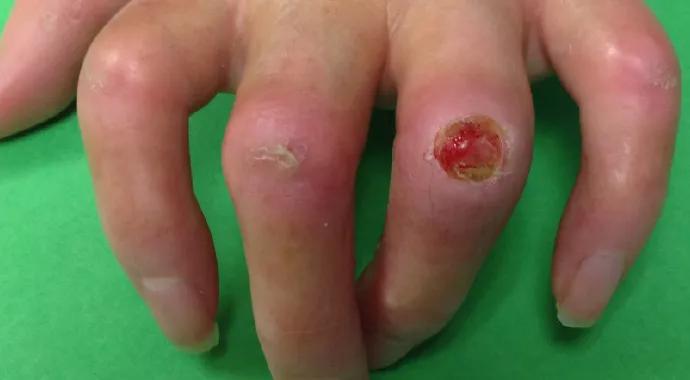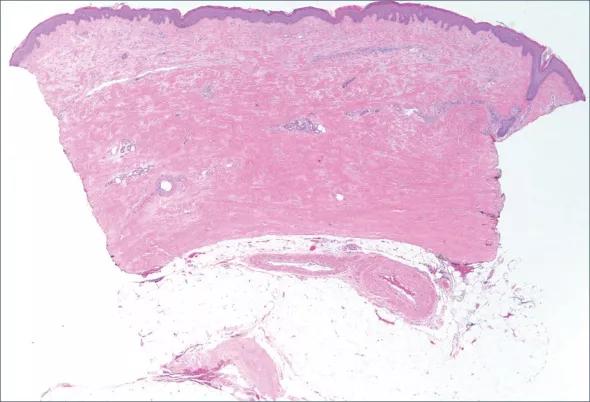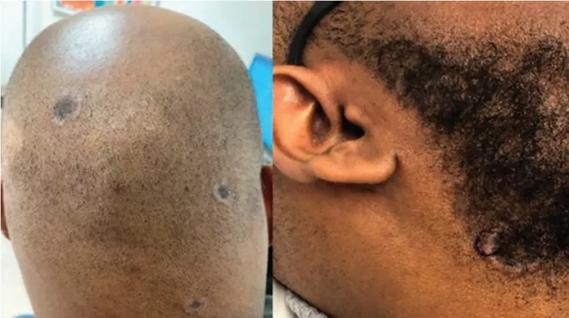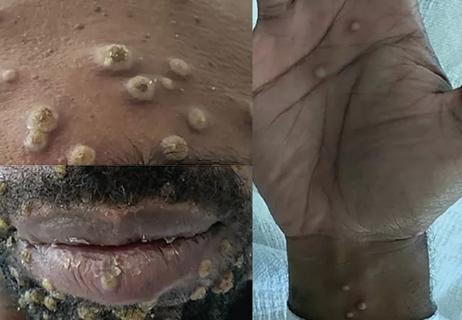Plenty of options being studied, but more RCTs needed

By Soumya Chatterjee, MD, MS, FRCP
Cleveland Clinic is a non-profit academic medical center. Advertising on our site helps support our mission. We do not endorse non-Cleveland Clinic products or services. Policy
Management of systemic sclerosis (SSc), also known as scleroderma, remains one of medicine’s most recalcitrant challenges. No effective disease-modifying therapy is available to reverse, arrest or even slow down the self-perpetuating disease process. However, many potential therapies are in various stages of investigation for use in SSc, including those for skin thickening, a manifestation that figures prominently in nearly all cases. Although these skin manifestations lack the potentially life-threatening effects of internal organ complications of SSc, they are a much more commonly encountered source of morbidity and disability, and effective treatments are scarce.
This post provides an overview of traditional and investigational therapies for the skin manifestations of SSc, including our own experience with some of these therapies.
SSc is characterized by immune system activation, endothelial dysfunction, enhanced fibroblast proliferation and increased production of extracellular matrix proteins.
The earliest stage in the pathogenesis is endothelial cell activation and microvascular injury, which is followed by the extravasation of inflammatory cells and activation of fibroblasts. These activated fibroblasts become autonomous and continue to produce an excess of extracellular matrix proteins that underlie the ultimate fibrotic pathology in SSc. Very little evidence of ongoing inflammation is visible within advanced lesional skin, suggesting that this is a self-perpetuating fibrotic process.
The progressive skin changes in SSc are illustrated in this related Consult QD post. Histologically, areas of indurated skin are characterized by excessive deposition of compact or hyalinized collagen, atrophic eccrine and pilosebaceous glands, loss of subcutaneous fat, and sparse lymphocytic infiltrate in the dermis and subcutis (Figure 1). Direct immunofluorescence studies are usually negative.

Figure 1. Histopathology of a skin-punch biopsy specimen in a patient with SSc. The epidermis is relatively normal, but the middle and lower dermis contain thickened, eosinophilic collagen bundles. Note the overall paucity of adnexal structures and blood vessels. Even at low power, loss of the adipose tissue normally surrounding the eccrine glands is apparent.
Skin changes in SSc are monitored using the modified Rodnan skin score (mRSS), a validated measure for skin thickness routinely used to assess the extent of skin hardening and its rate of progression over time. Irrespective of therapy, in most patients with diffuse disease, skin thickness usually progresses for the first three to five years, reaches a steady state and then eventually starts to regress spontaneously, as part of the disease’s natural history (Figure 2). This pattern makes any benefit demonstrated by a disease-modifying agent difficult to evaluate. For this reason, only well-designed randomized controlled trials (of which there have been regrettably few) can assess the clinical effectiveness of any intervention.

Figure 2. Graph showing the differing patterns of skin thickening over time in diffuse vs. limited SSc.
Methotrexate (MTX). Historically, MTX has been used to alleviate rapidly progressive skin thickness in SSc based on data from two randomized controlled trials. MTX can also be used for SSc-associated inflammatory arthritis and myositis. In our experience at Cleveland Clinic, the success of MTX has been variable, with some patients benefiting and others not. Because there is no easy way to predict who is likely to benefit, there is a desperate need for novel therapies in patients unresponsive to or intolerant of MTX
Mycophenolate mofetil (MMF). Two published case series have demonstrated the efficacy of MMF for regression of skin thickness in diffuse SSc, which aligns with our favorable experience with MMF in this regard at Cleveland Clinic.
In patients who do not respond to MTX or MMF, intravenous immunoglobulin or rituximab may be additional options.
Intravenous immunoglobulin (IVIG). IVIG has been shown to significantly improve patients’ mRSS in both a multicenter randomized controlled trial in Japan and a single-center retrospective study of 30 patients followed over two years in the United States.
Our own experience with IVIG in this setting has likewise been promising. The biggest hurdle has been insurance approval for this off-label use of IVIG. In most patients who are able to receive IVIG, we have found it to be effective in reducing mRSS, pain, myopathy, inflammatory arthritis, painful tendon friction rubs, joint contractures and fatigue. In these patients, the mRSS improved considerably faster than what could be expected from the disease’s natural history.
Rituximab. A couple of clinical trials have shown rituximab to be well tolerated, with the majority of patients with diffuse SSc showing significant improvement in mRSS.
Phototherapy with ultraviolet A1 (UVA1) radiation has been successfully used in localized scleroderma (morphea). Anecdotal experience suggests that UVA1 may also hold promise for skin disease in diffuse SSc. However, it is expensive and requires a special light source that is not widely available.
An alternative phototherapy regimen involves oral administration of psoralen before UVA treatment (PUVA). This regimen may prove useful for patients with early-onset diffuse SSc. Extracorporeal photopheresis has also shown some promise in diffuse SSc.
HSCT is an emerging treatment option for early progressive SSc. The Autologous Stem Cell Transplantation International Scleroderma (ASTIS) trial, which compared HSCT to 12 successive monthly IV pulses of cyclophosphamide, found that HSCT demonstrated improvement in long-term event-free survival, overall survival at median follow-up of approximately six years, mRSS, forced vital capacity, and patient-reported outcomes at two years. However, toxicity could be substantial in the first year after HSCT, with more events — including treatment-related deaths — in the HSCT group than in the cyclophosphamide group.
Two other studies provide additional evidence in favor of HSCT, including a retrospective analysis and an open-label randomized trial.
Cleveland Clinic has participated in several studies (some ongoing) exploring the role of the following biologic response modifiers for skin hardening in SSc:
For the completed studies, analysis is ongoing and results are awaited.
For all these potential therapies, small sample sizes and considerable patient heterogeneity in SSc skin disease are significant limitations to the ability to draw generalizable conclusions. While recent evidence in support of some of the alternative therapies discussed above is encouraging, more randomized trials — some of them currently underway — are needed.
For a bibliography of supportive references, email the author.
Dr. Chatterjee directs the Scleroderma Program in the Department of Rheumatic and Immunologic Diseases.

Consider secondary syphilis in the differential of annular lesions

Persistent rectal pain leads to diffuse pustules

Techniques are borrowed from rhinoplasty, malar augmentation and others

Two cases — both tremendously different in their level of complexity — illustrate the core principles of nasal reconstruction

Stress and immunosuppression can trigger reactivation of latent virus

Low-dose, monitored prescription therapy demonstrates success

Antioxidants, barrier-enhancing agents can improve thinning hair